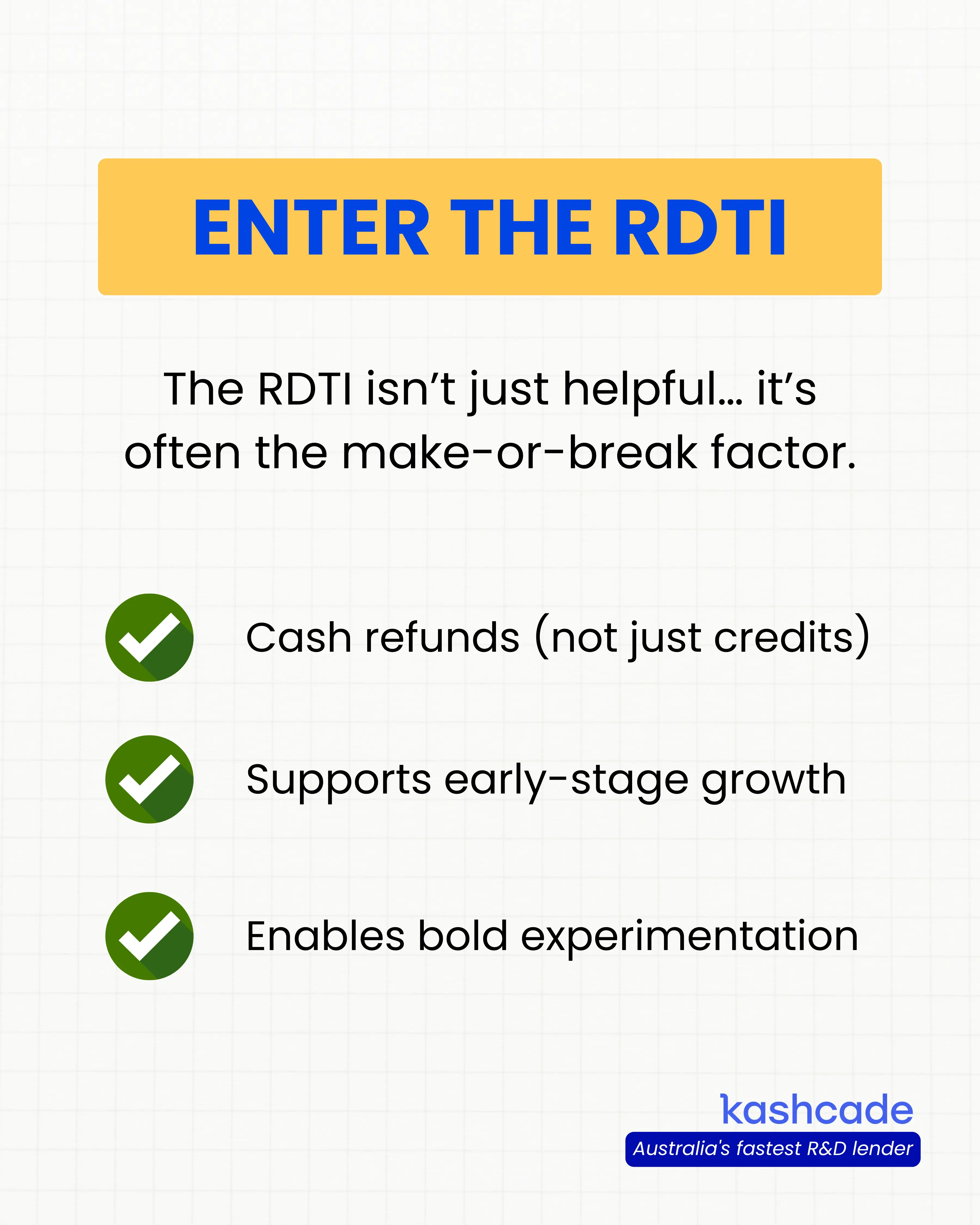Startup Advantage: Why Early-Stage Businesses Are Embracing the RDTI
Every day, we see ambitious founders, armed with groundbreaking ideas and relentless drive, pushing the boundaries of what's possible. And when we look at what's truly fueling this early-stage revolution, one program stands head and shoulders above the rest: the Research and Development Tax Incentive (RDTI).
Our recent deep dive into the ATO Transparency Report for FY2021-22 confirmed something truly exciting: the vast majority of RDTI recipients are small, early-stage companies. In fact, over 60% of all claimants were companies less than 9 years old!
This isn't just a dry statistic; it's a powerful indicator of the vibrant contribution our youngest businesses are making to Australia's innovation landscape, proving they're not just participating; they're driving it. This is a fantastic point to build on, showcasing how the RDTI is empowering the next generation of Australian trailblazers.
The RDTI: A crucial lifeline in the innovation marathon
Let's be honest: launching an R&D-intensive business is a high-stakes game.
You're venturing into the unknown, pouring precious capital into unproven ideas, and often facing a long, winding road before any real revenue appears.
These challenges are amplified for early-stage ventures with limited resources – think high upfront costs for specialised equipment, the expense of hiring top-tier scientific or engineering talent, and the inherent uncertainty of experimental outcomes.
This is precisely where the RDTI steps in as a vital, often make-or-break, support system. It plays a crucial role in enabling early-stage businesses to even get off the ground and sustain their critical research.
The program directly tackles some of the inherent risks that come with early-stage R&D. For instance, for companies with an aggregated turnover under $20 million, the refundable tax offset means a direct cash refund, not just a future tax credit.
Imagine that: in FY2021-22 alone, an estimated $2 billion in cash refunds went directly back to companies under 9 years old. This capital is then reinvested into further R&D, allows them to hire brilliant minds (whose salaries are often the largest R&D expense), and ultimately extends their runway, turning ambitious concepts into tangible progress.

Without it, many of these budding enterprises simply wouldn't have the financial endurance to navigate the inevitable setbacks and lengthy development cycles that groundbreaking innovation demands.
Beyond survival: Paving the way for long-term success
The benefits of the RDTI extend far beyond immediate financial relief. These early investments are actively shaping the long-term success and survival rates of Australian businesses.
Our data uncovers a truly remarkable fact: RDTI claimants had a 13 times lower failure rate than the average Australian company between December 2022 and October 2024. Let that sink in for a moment. While the overall Australian company deregistration rate was over 14% during that period, only a tiny 1.07% of RDTI claimants were deregistered.
So, why such a massive difference? It's a combination of factors, directly linked to the RDTI's unique offering:
- Critical cash flow: The refundable cash component provides a crucial financial buffer. R&D is unpredictable; projects can pivot, experiments can fail, and market conditions can shift. Having that capital injection helps companies absorb these shocks and continue iterating, rather than running out of funds and being forced to close.
- Investor confidence: For external investors, the RDTI acts as a de-risking mechanism. Knowing that a portion of R&D expenditure is effectively underwritten by the government makes every dollar invested by venture capitalists or angels stretch further. This enhances a startup's attractiveness, drawing in more vital growth capital and strengthening its overall financial position.
- Focus on innovation: Companies leveraging the RDTI are, by definition, engaged in systematic, experimental R&D. This commitment to innovation often means they are tackling novel problems with a clear vision, fostering a culture of continuous improvement and adaptation that naturally leads to greater resilience and longevity.
While it's tempting to think that only the "strongest" companies pursue R&D and that's why they survive, our analysis tells a different story.
.webp)
The overwhelming majority of RDTI claimants are precisely those young businesses in their first decade of existence. With a mere 1% of RDTI companies failing, it’s clear that this incentive is genuinely empowering these budding enterprises to not just survive, but to flourish and contribute to Australia's economic future.
Driving Australia's innovation future
The RDTI's profound impact on early-stage businesses is a core driver of Australia's overall innovation agenda. It cultivates an environment where bold ideas can take root, grow, and ultimately contribute to a more diversified, resilient economy. By backing these young innovators, we're doing more than just funding individual companies; we're investing in:
● Skilled Job Creation: Our analysis estimates that approximately 95,000 full-time R&D jobs exist in Australia directly linked to RDTI investment. Industries with higher RDTI engagement consistently employ more R&D professionals, underscoring the program's vital role in fostering highly skilled employment.
● Global Competitiveness: The program helps Australian businesses, regardless of their size, develop cutting-edge solutions that can compete on the world stage. From life-changing biotech breakthroughs to advanced manufacturing techniques, the RDTI is enabling our nation to make big bets on truly transformative innovations.
● Sustainable Economic Growth: These early investments lay the groundwork for tomorrow's industries, open new revenue streams, and build a stronger, more dynamic economic future for Australia, moving us beyond over-reliance on traditional sectors.
As we continue to champion Australia's vibrant startup ecosystem, the RDTI remains an indispensable pillar. The "Startup Advantage" isn't just a catchy phrase; it's a tangible reality, and the RDTI is a fundamental reason why.
